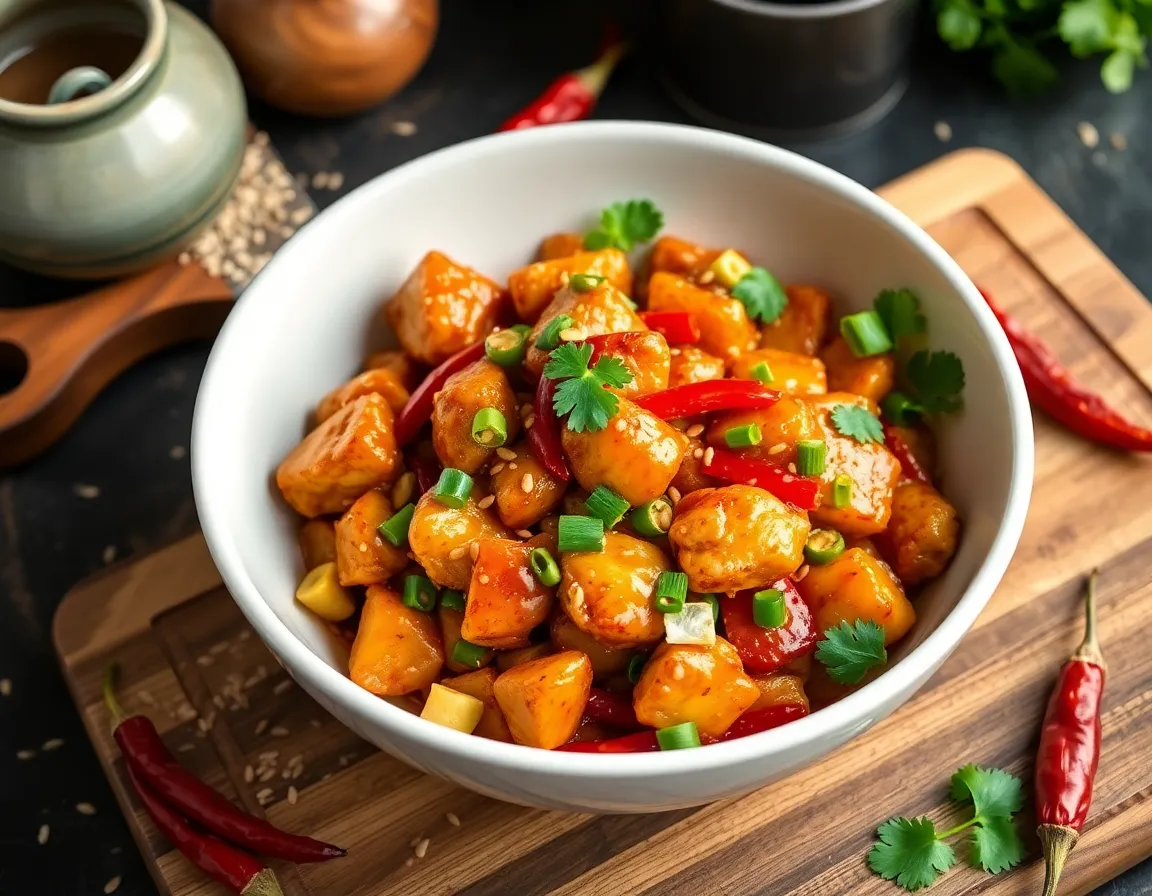Get ready to embark on a culinary adventure with our authentic Kung Pao Chicken recipe, a dish that beautifully balances spicy, sweet, and savory flavors. Whether you’re a beginner eager to try your hand at Chinese cuisine or a seasoned cook looking to perfect this classic, this recipe promises an explosion of taste with every bite. The combination of tender chicken, crunchy peanuts, and vibrant vegetables, all enveloped in a rich, tangy sauce, makes it irresistibly delicious.
Imagine the delightful sizzle and aroma as ginger and garlic hit the hot pan, setting the stage for an unforgettable meal. This recipe’s special touch lies in the harmony of Sichuan peppercorns and dried chilies, offering just the right kick without overwhelming your senses. With clear, step-by-step instructions, you’ll feel confident transforming your kitchen into a vibrant Chinese eatery, impressing yourself and your loved ones with this mouthwatering creation.
About This authentic kung pao chicken Recipe
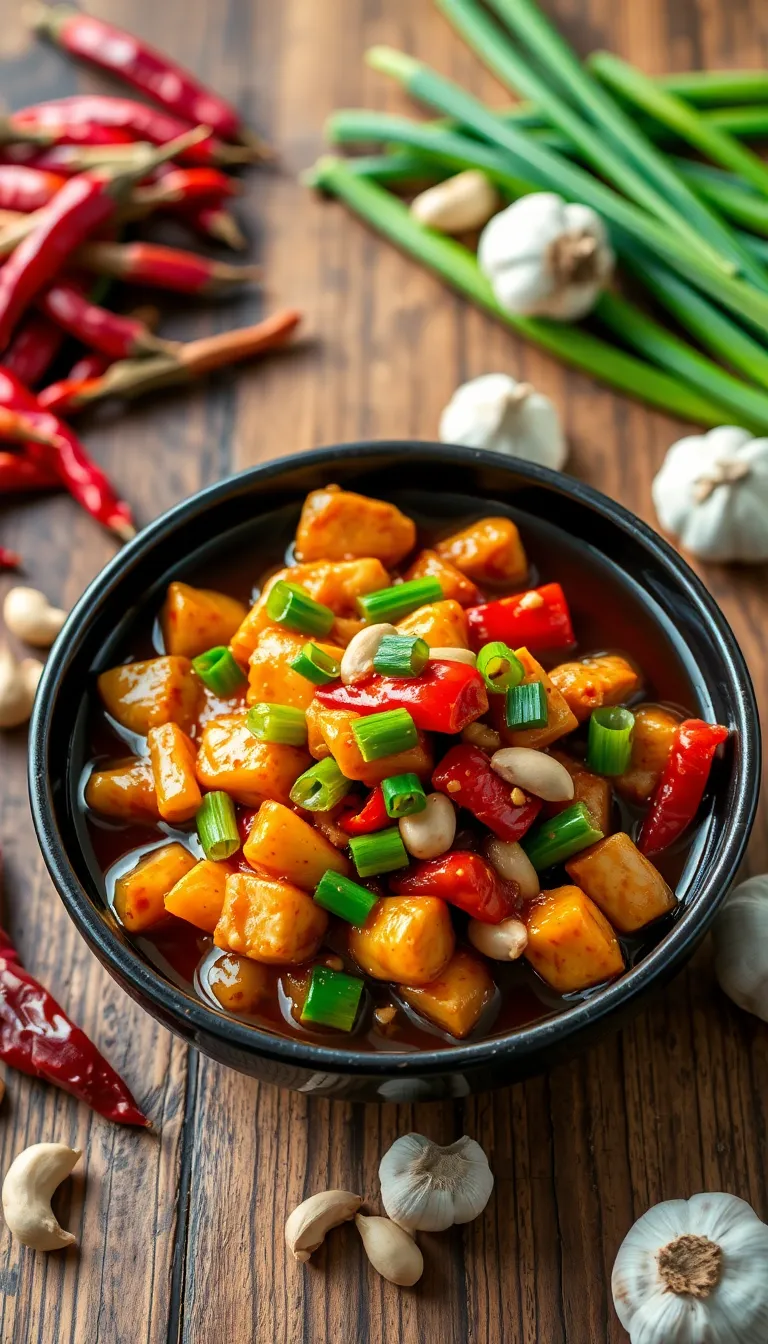
- Authentic Flavor: This recipe stays true to the traditional Sichuan method, offering a rich, spicy, and savory taste that transports you straight to China.
- Easy to Prepare: With simple steps and easily accessible ingredients, you can whip up this delicious dish in under 30 minutes, perfect for a quick weeknight meal.
- Customizable Heat: Adjust the spice level to your preference, making it suitable for those who love a fiery kick or a milder, more balanced flavor.
- Protein-Packed: Featuring tender chicken and nutritious peanuts, this dish offers a satisfying meal packed with protein and healthy fats.
- Vibrant and Colorful: The combination of chicken, vegetables, and peanuts creates a visually appealing dish that looks as good as it tastes.
- Versatile Serving Options: Enjoy it on its own, or serve it over steamed rice or noodles for a complete, hearty meal.
Why You’ll Love This Recipe
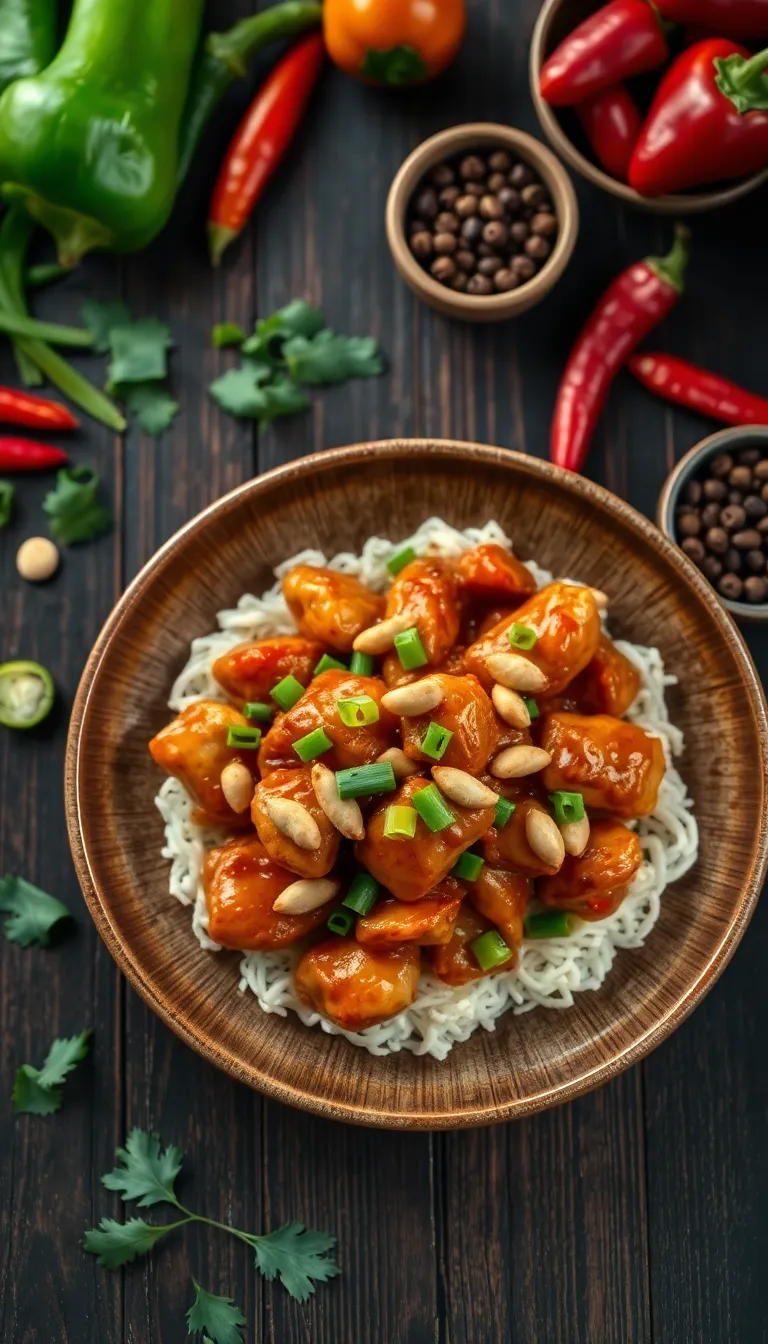
- Authentic Flavor: This recipe captures the true essence of Sichuan cuisine with a perfect balance of spicy, sweet, and savory flavors.
- Quick and Easy: With simple steps and readily available ingredients, you can have a delicious meal ready in under 30 minutes.
- Healthy Ingredients: Packed with lean protein from chicken and the nutritional benefits of peanuts and vegetables, it’s a wholesome choice.
- Customizable Spice Level: Adjust the heat to your liking, making it ideal for family dinners or entertaining guests with varied spice preferences.
- Rich History: Enjoy a dish with deep cultural roots that brings a taste of traditional Chinese cooking right to your kitchen.
Ingredients
Ingredients
- 1 lb boneless, skinless chicken breast or thighs, diced into 1-inch cubes
- 2 tbsp soy sauce
- 1 tbsp Shaoxing wine (or dry sherry)
- 1 tbsp cornstarch
- 3 tbsp vegetable oil, divided
- 1/2 cup unsalted roasted peanuts
- 8-10 dried red chilies (whole or cut in half for more spice)
- 1 red bell pepper, diced
- 5 green onions, white and green parts separated, sliced
- 3 cloves garlic, minced
- 1 tsp fresh ginger, minced
- 1/4 cup low-sodium soy sauce
- 1 tbsp black vinegar (Chinkiang vinegar; can substitute with balsamic vinegar)
- 1 tbsp hoisin sauce
- 2 tsp sugar
- 1 tsp sesame oil
- 1 tbsp cornstarch mixed with 2 tbsp water (to create a slurry for thickening)
- 1/4 tsp Sichuan peppercorns, toasted and ground (optional)
- Cooked white rice for serving (optional)
Kitchen Tools You’ll Need
- Wok or Large Skillet: Essential for stir-frying the chicken and vegetables quickly over high heat. If you don’t have a wok, a large deep skillet can be a good substitute.
- Sharp Knife: Needed for slicing chicken and chopping vegetables evenly, ensuring they cook at the same rate.
- Cutting Board: Provides a stable surface for safely chopping ingredients like chicken, bell peppers, and green onions.
- Mixing Bowl: Useful for marinating the chicken and mixing the sauce ingredients before cooking.
- Measuring Spoons and Cups: Ensure accurate measurement of sauces and seasonings for the perfect flavor balance.
- Spatula or Wooden Spoon: Ideal for stirring and tossing the ingredients in the wok to ensure even cooking and coating with sauce.
- Garlic Press (Optional): Can be used to mince garlic quickly. Alternatively, you can finely chop it with a knife.
Preparation Steps
- Marinate the chicken by combining cubed chicken breast with soy sauce, Shaoxing wine, and cornstarch in a bowl. Let it sit for at least 20 minutes to absorb flavors.
- Heat a tablespoon of oil in a large wok over medium-high heat until shimmering. Stir-fry dried chili peppers and Sichuan peppercorns for about 1 minute, or until the chilies turn dark red but not burned.
- Add the marinated chicken to the wok and stir-fry for about 3-4 minutes until the chicken is cooked through and lightly browned.
- Introduce diced bell peppers, zucchini, and peanuts to the wok. Stir-fry for an additional 2 minutes until the vegetables are tender-crisp and the peanuts are toasted. Look for vibrant colors and a slight char on the veggies.
- Pour in the sauce mixture of soy sauce, vinegar, sugar, and sesame oil. Stir well to evenly coat all ingredients, cooking for 1-2 minutes until the sauce thickens and glazes the chicken.
- Garnish with chopped green onions and serve immediately with steamed rice or noodles. Enjoy your authentic Kung Pao Chicken!
Serving Suggestions
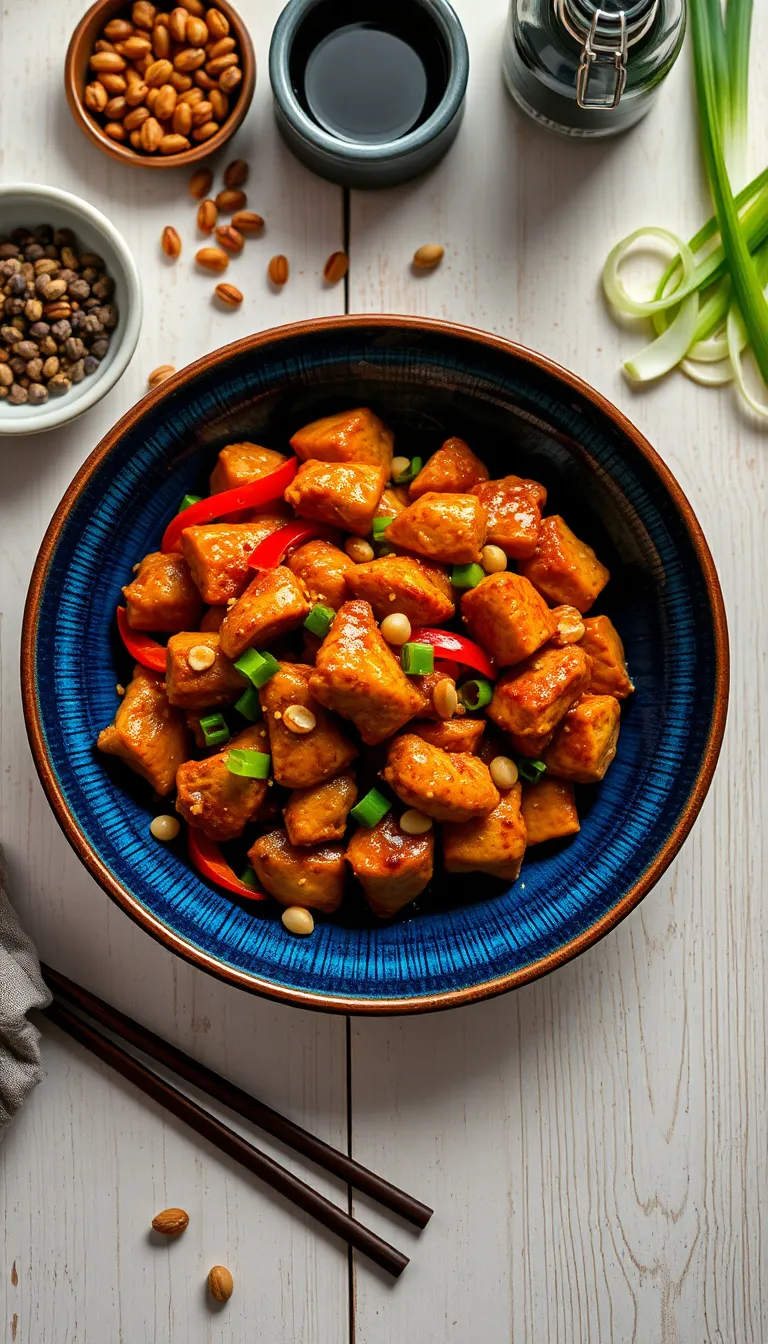
- Steamed Jasmine Rice: Serve the kung pao chicken over a bed of steamed jasmine rice. The fragrant rice captures the savory sauce perfectly and balances the spicy, tangy flavors of the dish.
- Chilled Cucumber Salad: Pair with a refreshing cucumber salad tossed with sesame oil and vinegar. The cool, crisp cucumbers provide a refreshing contrast to the heat of the kung pao chicken.
- Garnish with Toasted Sesame Seeds: Sprinkle toasted sesame seeds over the finished dish for added crunch and a nutty aroma that complements the peanuts in the recipe.
- Light Lager Beer: Serve with a light lager or pilsner to cleanse the palate. The crisp, refreshing beer cuts through the richness of the sauce and enhances the dining experience.
- Asian Vegetable Stir-Fry: Accompany with a side of stir-fried vegetables such as bok choy, bell peppers, and snap peas. The colorful veggies add vitamins and a variety of textures to the meal.
- Chopped Green Onions: Garnish with freshly chopped green onions for a pop of color and a mild onion flavor that complements the dish without overpowering it.
Final Thoughts
Pro Tips for Perfect Results
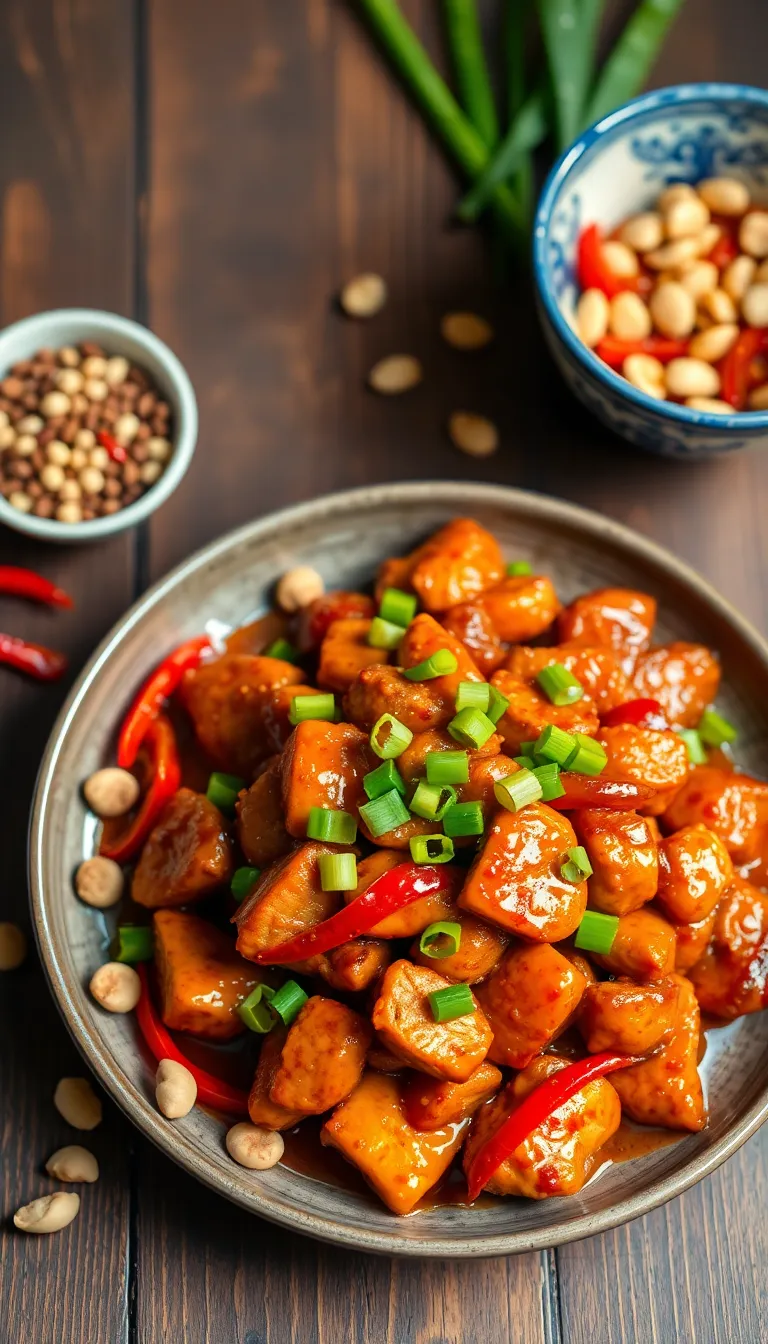
- Marinate for Maximum Flavor: Allow the chicken to marinate for at least 30 minutes before cooking. This not only tenderizes the meat but also infuses it with deeper flavors, making every bite more satisfying.
- Perfect Your Stir-Fry Timing: Stir-fry the chicken until it’s about 80% cooked before adding the vegetables. This ensures that the chicken remains juicy and the vegetables stay crisp-tender, creating a balanced texture.
- Control the Heat: Use dried red chilies to adjust the heat level to your preference. If you enjoy a milder dish, remove the seeds from the chilies before adding them to the pan.
- Prep Ingredients Ahead: Chop and measure all ingredients before you start cooking. This mise en place approach will streamline the cooking process and prevent overcooking or burning ingredients.
- Balance the Sauce: Taste the sauce before adding it to the dish and adjust the soy sauce, vinegar, and sugar to suit your palate. A well-balanced sauce is key to an authentic Kung Pao Chicken.
- Chef’s Secret for Extra Depth: Toast the Sichuan peppercorns in a dry pan before crushing them. This releases their essential oils and enhances their unique flavor, giving the dish a signature numbing heat.
Final Thoughts
Common Mistakes to Avoid
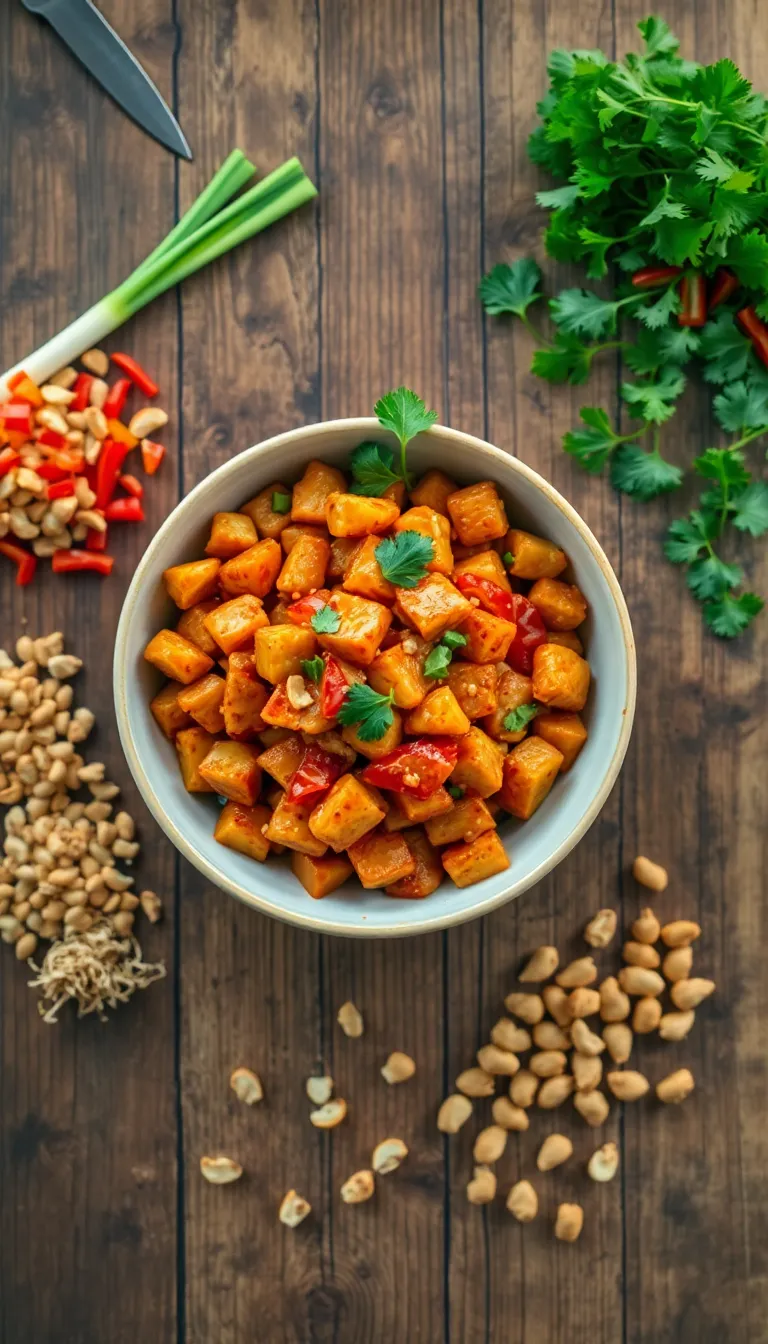
- Overcrowding the Pan: This mistake often occurs because people try to cook all the chicken at once to save time. Overcrowding the pan causes the chicken to steam rather than sear, leading to a lack of that desirable crispy texture. To avoid this, cook the chicken in batches, ensuring there is enough space around each piece for even browning.
- Using Low Heat: Kung Pao Chicken requires high heat to properly sear the ingredients, especially the chicken and vegetables. Using low heat can result in soggy textures and a lack of flavor development. To prevent this, make sure your pan is preheated on high before adding any ingredients, and maintain that heat throughout the cooking process.
- Incorrect Sauce Consistency: A common mistake is not thickening the sauce enough. This usually happens when the sauce is not cooked long enough or if there is too much liquid. To fix this, simmer the sauce until it coats the back of a spoon, stirring frequently to prevent sticking and burning.
- Skipping the Marinade: The marinade is crucial for tenderizing the chicken and infusing it with flavor. Skipping it or not allowing enough time can lead to bland and tough chicken. Always marinate the chicken for at least 15-20 minutes to ensure it absorbs the flavors and achieves optimal tenderness.
- Ignoring Ingredient Preparation: Having all your ingredients prepped and ready is vital for stir-frying. This dish cooks quickly, so if you’re not prepared, you might end up with overcooked or unevenly cooked components. To avoid this, chop and measure all ingredients before you start cooking.
Storage and Reheating Tips
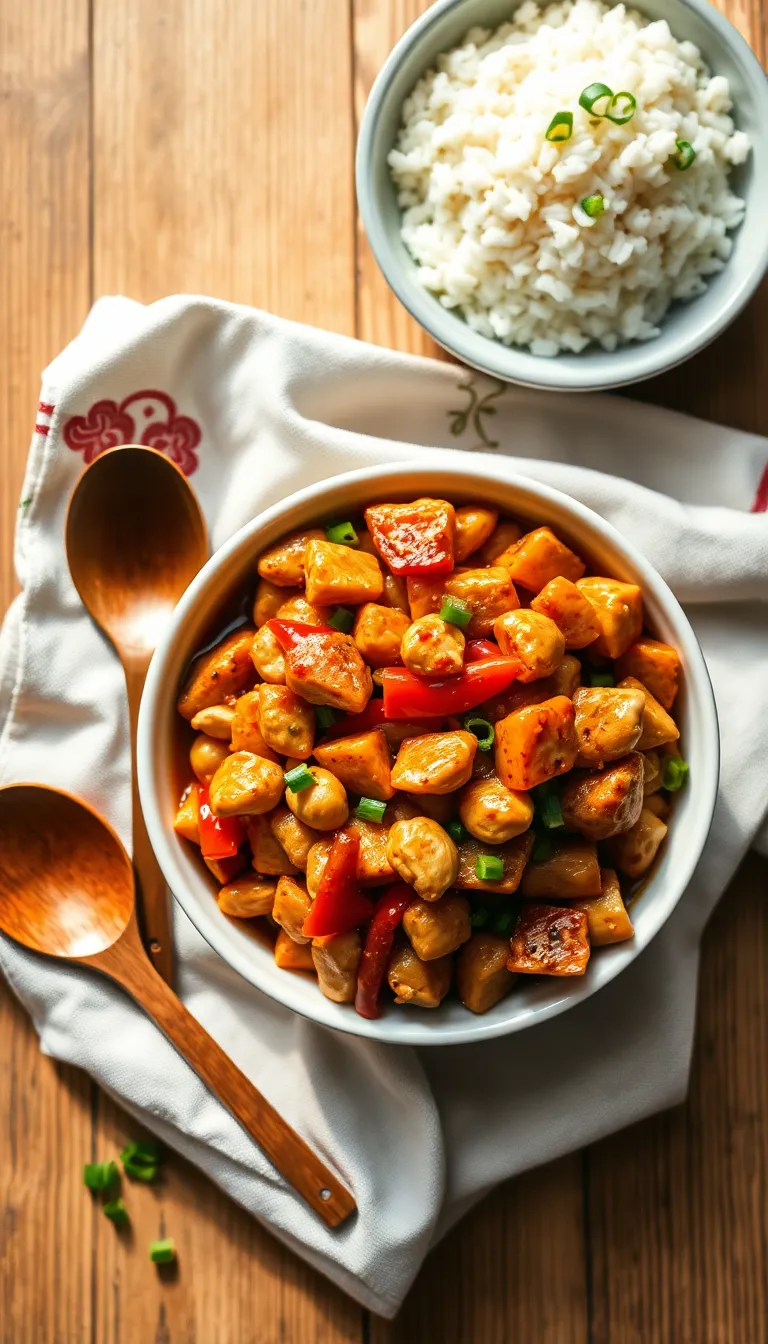
- Store leftover Kung Pao Chicken in an airtight container to maintain freshness. Glass or BPA-free plastic containers are recommended.
- Refrigerate leftovers promptly, ideally within two hours of cooking, to prevent bacterial growth.
- Kung Pao Chicken can be safely stored in the refrigerator for up to 3-4 days.
- Freezing: For longer storage, you can freeze Kung Pao Chicken. Portion the dish into smaller containers or freezer bags, removing as much air as possible to prevent freezer burn. It can be stored in the freezer for up to three months.
- Reheating: For the best results, reheat Kung Pao Chicken on the stovetop. Add a splash of water or chicken broth to the pan to prevent drying out, and heat over medium heat until warmed through.
- Microwave reheating is also an option. Place the chicken in a microwave-safe dish and cover with a damp paper towel. Heat in short intervals, stirring occasionally, until the dish is evenly heated.
- If reheating from frozen, it’s best to thaw the chicken in the refrigerator overnight before reheating to ensure even heating and reduce the risk of overcooking.
- Food Safety: Ensure the chicken reaches an internal temperature of 165°F (74°C) when reheated to guarantee it’s safe to eat.
Proper storage and careful reheating can significantly extend the life of your Kung Pao Chicken, allowing you to enjoy this delicious dish while maintaining its authentic flavors and textures.
Frequently Asked Questions

Q: Can I substitute chicken breast for chicken thighs in this recipe?
- Yes, you can. Chicken breast can be used instead of thighs, but it may result in a slightly less juicy texture. Adjust cooking time as needed to avoid overcooking.
Q: What can I use if I don’t have Sichuan peppercorns?
- Substitute with black pepper or ground coriander, but note that you will miss the unique numbing spice effect of Sichuan peppercorns.
Q: How do I prevent the peanuts from getting soggy?
- Add peanuts at the end of the cooking process to ensure they remain crunchy.
Q: What should I do if the sauce is too thick?
- Gradually add water or chicken broth, a tablespoon at a time, while stirring until you reach the desired consistency.
Q: Is it possible to make this dish vegetarian?
- Yes, replace chicken with tofu or your favorite vegetables such as bell peppers or zucchini for a vegetarian version.
Q: Can I prepare Kung Pao Chicken in advance?
- Yes, you can prep the ingredients ahead and store them separately. Cook the dish just before serving for the best flavor and texture.
Final Thoughts
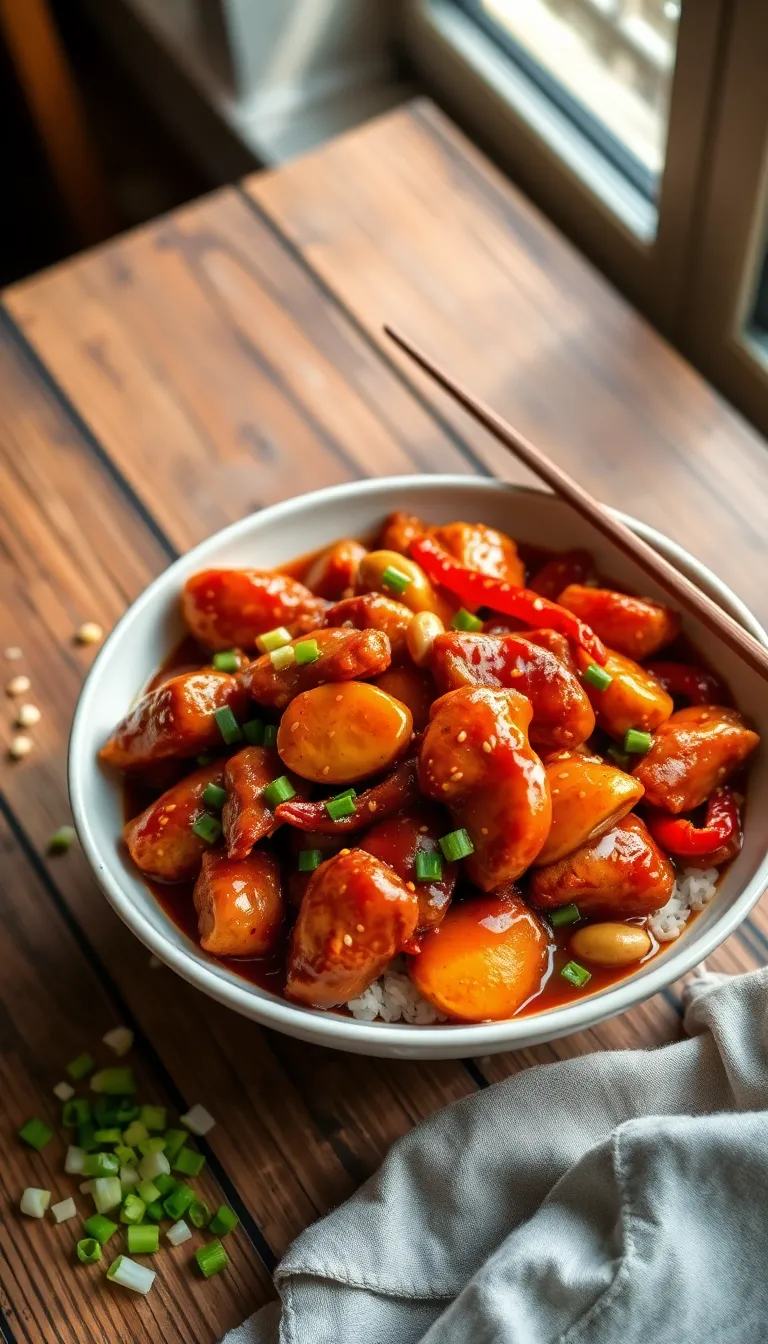
This authentic Kung Pao Chicken recipe combines a perfect balance of spicy, sweet, and tangy flavors, making it a stand-out dish in any culinary repertoire. With its vibrant colors and tantalizing aromas, it’s a meal that’s as visually appealing as it is delicious. The blend of tender chicken, crunchy peanuts, and zesty sauce is what truly makes this recipe a must-try for any food enthusiast.
Don’t hesitate to make this dish your own by adjusting the spice level or adding your favorite vegetables for a personal twist. Cooking is all about creativity, and this recipe is a fantastic base for experimentation. Feel empowered to put your unique spin on it and share it with family and friends.
We warmly invite you to try this Kung Pao Chicken recipe in your kitchen. It’s more than just a dish—it’s an experience that will delight your taste buds and bring a piece of authentic Chinese cuisine into your home. Happy cooking!

Mark Renshaw is the creator of Val’s Recipe Box, a heartfelt food blog preserving cherished family recipes inspired by his grandmother Val. Blending nostalgic storytelling with comforting, unfussy dishes, he celebrates the tradition and love behind every meal.

